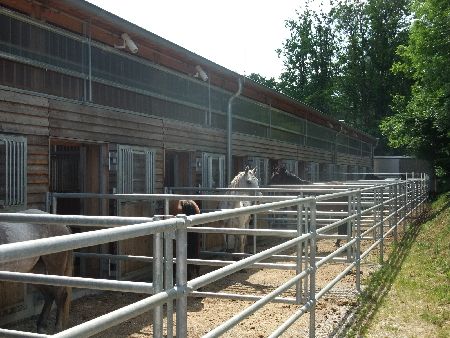In accordance with these requirements, many horse owners have started to expand their horse's box to include a paddock. The quality of life of the animals is increased - on the one hand by the provision of different climatic stimuli and by the increased space available (free choice of where to stay).
The basis for discussion by the Animal Welfare Council and the trigger for the planned project is the fact that current-carrying fences are increasingly being used to fence in the paddock. Experts suspect that the space requirement could be limited as soon as the horse comes into contact with the electricity - the animals are in a stressful situation and will probably keep a safe distance from the fence in the future (learning effect). This could also indicate reduced social contact with the neighboring horse.
The project aims to record the possible effects of live fences on horses. By means of behavioral observations, the recording of heartbeat frequency and heart rate variability, the physical and psychological stress levels as well as the effective use of the area in small current-carrying areas are to be examined. The design of the box and paddock is certainly also crucial - this is primarily about the space available, the ratio of box to paddock area, floor design, the possibility of social contact in the box or paddock, design of the fence in terms of height, materials used and power supply .
The investigations will be carried out on several horse-keeping farms (mainly in the training stable and the Stadl Paura breeding station) in the summer months of 2012. Series of measurements lasting several days are planned, based on different fence systems and horse types, in order to achieve a meaningful result using the widest possible range.







